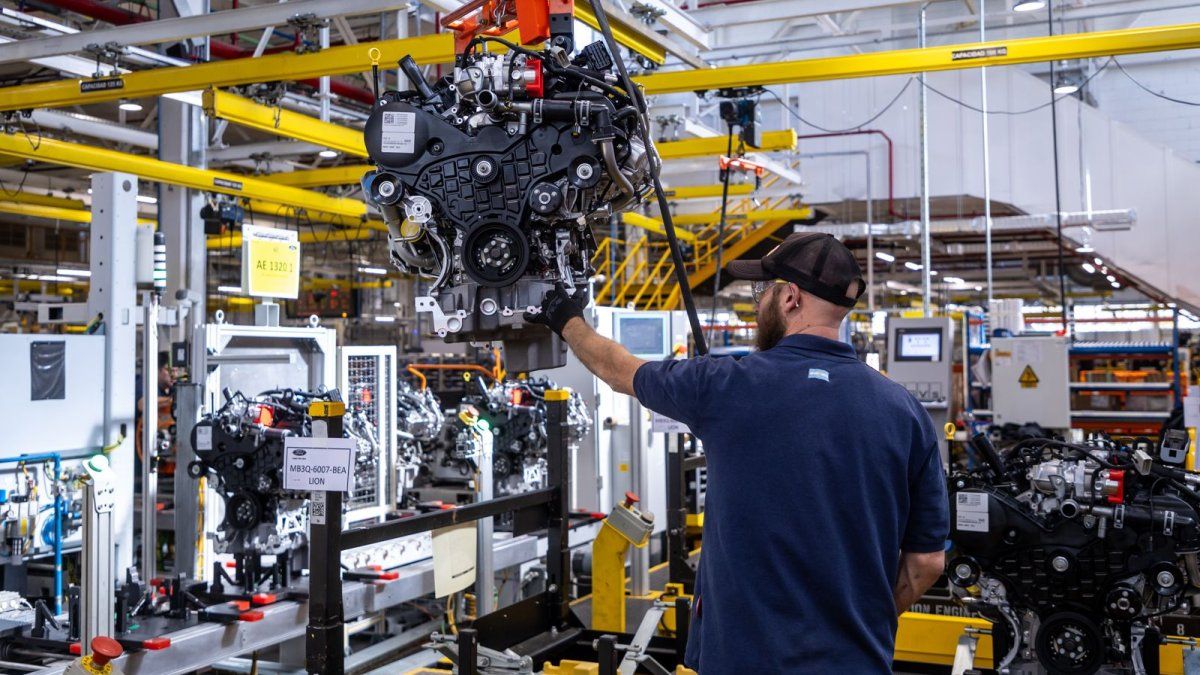While the data of the INDEC They estimated that Economic activity grew by 5.8% year -on -year during the first quarter of the year, That number hid the inequality with which it hit the provinces. Even, among which they showed the best performance, As soon as it was possible to overcome the fall they experienced during the first quarter of 2024. In the absence of official data for the second quarter, Different sectors of regional economies advanced a stagnation.
According to synthetic indicator of regional economic activity (Isaer) published by the Ministry of Economy, The Centro and Buenos Aires region registered an interannual growth of 6.7%. Meanwhile, the other regions showed more moderate advances: the NEA grew 2.9%, the Patagonia 2.0% and Noa 1.7%, while Whose 0.2% submitted contraction.
Only the Central Region, composed of the Province and City of Buenos Aires, Entre Ríos, Córdoba and Santa Femanaged to compensate for the 5.8% drop in the first quarter of last year. Then, The NEA dropped 7.2%, the NOA 4.3%, Patagonia contracted 2.9%and whose 2.7%scored.
The “traffic light” in green for the second quarter
Within the productive apparatus of the different regions, The panorama is heterogeneous. In the central region, agribusiness is one of the engines that drives the activity. In the first case, Soja exports broke recordsdriven by the temporal reduction of retentions. Meanwhile, the bovine task grew 0.5% year -on -year during the first semester, according to the CRA.
Consulted by Scopethe vice president of Coninagro, Marcelo Federiciexplained that among the Regional economiesthe dairy sector, mainly located in the central region, It is one of the few that shows a recovery. “Dairy towards the producer today is with a good price”, product of a “rearrangement in its production”.
“What happened is that Some drums merged and some closed. While there was no increase in consumption, there was an adaptation of production, also traction because in the dairy the calf remains as its product And today the vaccine part has a good price. By complementing with the calf that is marketed, it gives a positive balance in the activity, “he said.
In the Patagonian region, The weight of Muerta Vaca hydrocarbons is a key factor, since more than half of national production brings together. According to the latest official data, in the accumulated until May, the extraction of crude oil and natural gas grew 9.6% and 2.6%, respectively.
Black present in the textile industry: the activity and the sector falls “Employment Destruction”
The textile sectors are one of the most beaten.
In yellow: industry, wine and herb
Coninagro’s vice president remarked that Most regional economies are “quite complicated”. And he deepened: “By relying on the domestic market, the effects of the economy were felt over the course of the whole year and There has been a decrease in consumption in units and the price has also resent“
He cited the cases of viticulture, predominant in the region of Cuyo, in which They are “a year ago with the same prices” and “an important increase in production in production”; and the yerba mate, in the NEA. “The price of the grass kilo has dropped on the sheet and that is practically generating a break,” he said.
The manufacturing industryconcentrated in the downtown area, is another of the sectors of the economy that fails to take off. Although it showed a rise of 4.8% between April and May, continues below last year’s end levels.
For example, The automotive sector rose 15.6% year -on -year in the first half, although the fall of 26.7% of that same period of last year does not compensate. In line, steel production was 3.1% above in that same period of time, although Far is to trace the 16.7% drop in the 2024 In the first half of the year.
Red traffic light: cotton and textile
One of the most hit sectors is cotton production, located mainly in the North of Santa Fe, Chaco and Santiago del Estero. “It is a very critical year with producers who were already beaten. This year they bet that if they had a good harvest it could be a year of economic recoverybut not only will it not recover, but the crisis will be deepened, “the president of the Argentine cotton chamber lamented, Carlos Almiroty.
The businessman detailed Scope that the situation is the product of a confluence of three factors. The first was climatological, product of the lack of rains, increases and descents of temperature outside the average. “The harvest was minimized a month and also affected the quality of cotton that was harvested,” he acknowledged.
The second was the fall in international price, while the third is the product of the country’s macroeconomic conditions. On the one hand, he said that “Argentina has become more expensive in dollars”which adds more pressure to the balance that is exported, which represents approximately half of the national production, which is between 250 and 300 thousand tons.
On the other hand, he said that there is “Much concern” On the side of the textile industry, consumers of the other half of the production, because “they are also going through a complicated moment with the opening of imports.”
In fact, in April 2025, The textile industry recorded a level of use of installed capacity of 43%about 5 percentage points above the same month last year. However, 11.5 percentage points are maintained below the level observed in April 2023, according to Foundation Data.
The organization also warned that Household and Textile imports They marked a historical record in the first quarter of the year and marked a historical record: They grew 86% and 109% year -on -year in volumerespectively.
Source: Ambito




